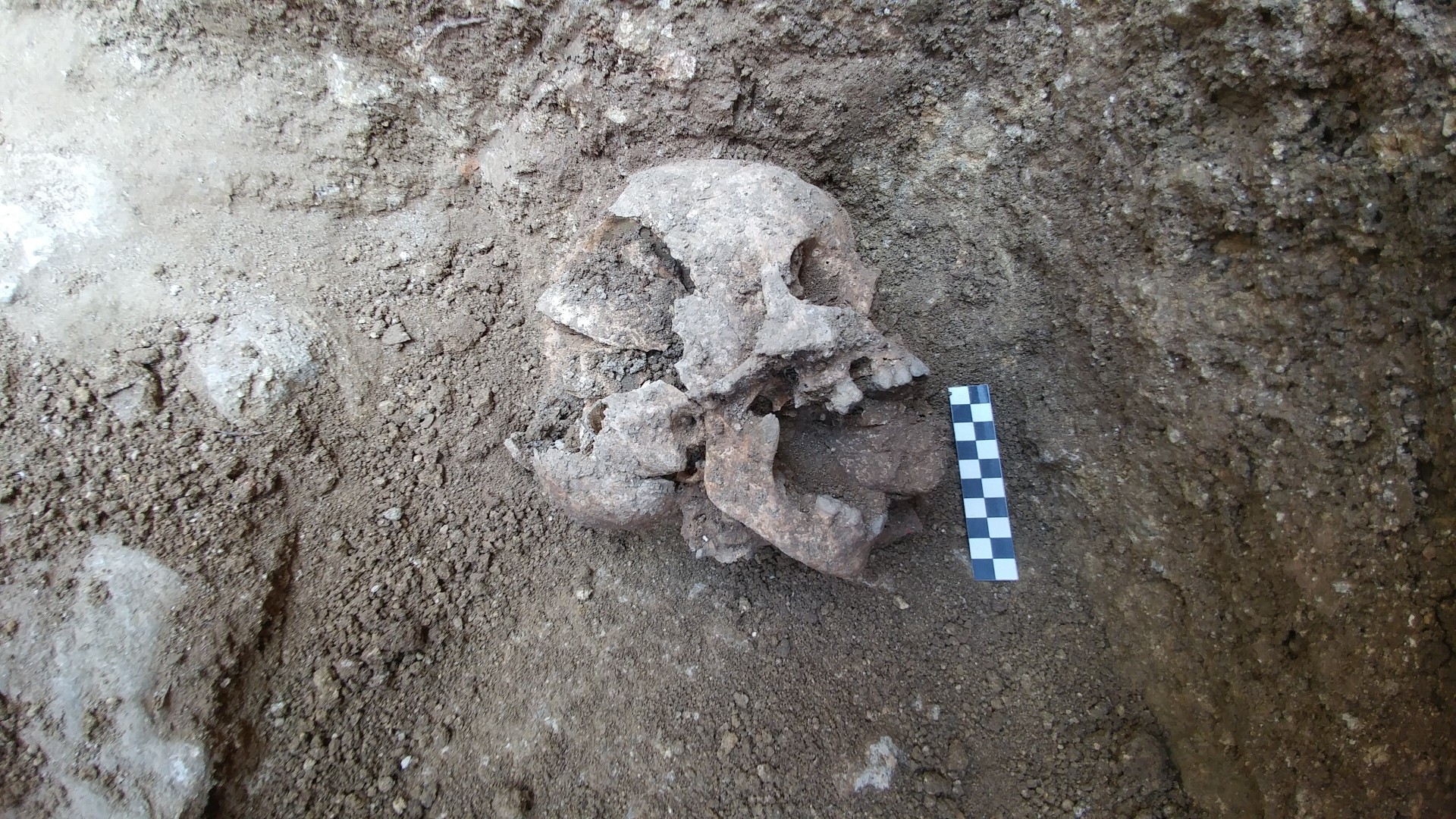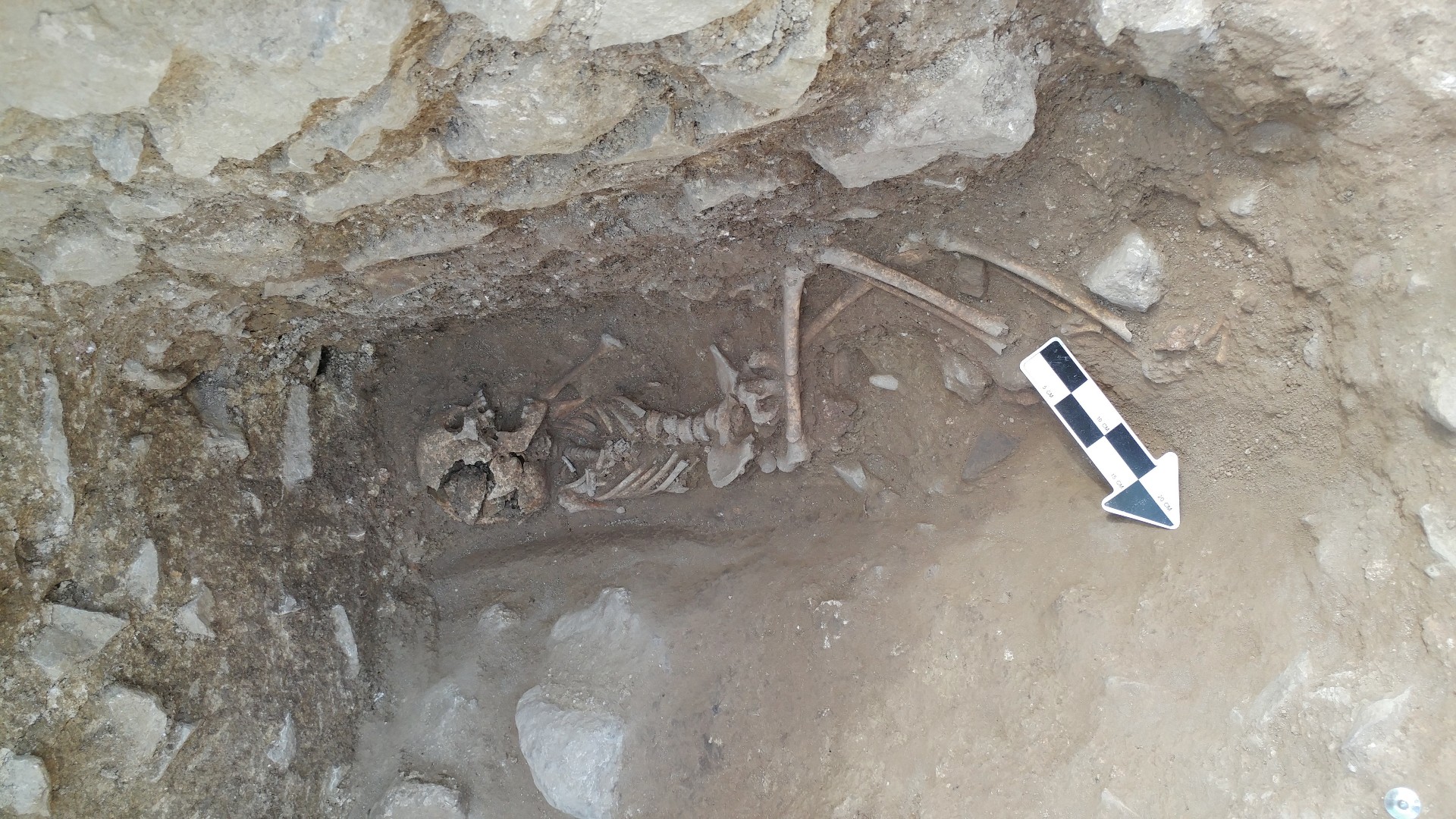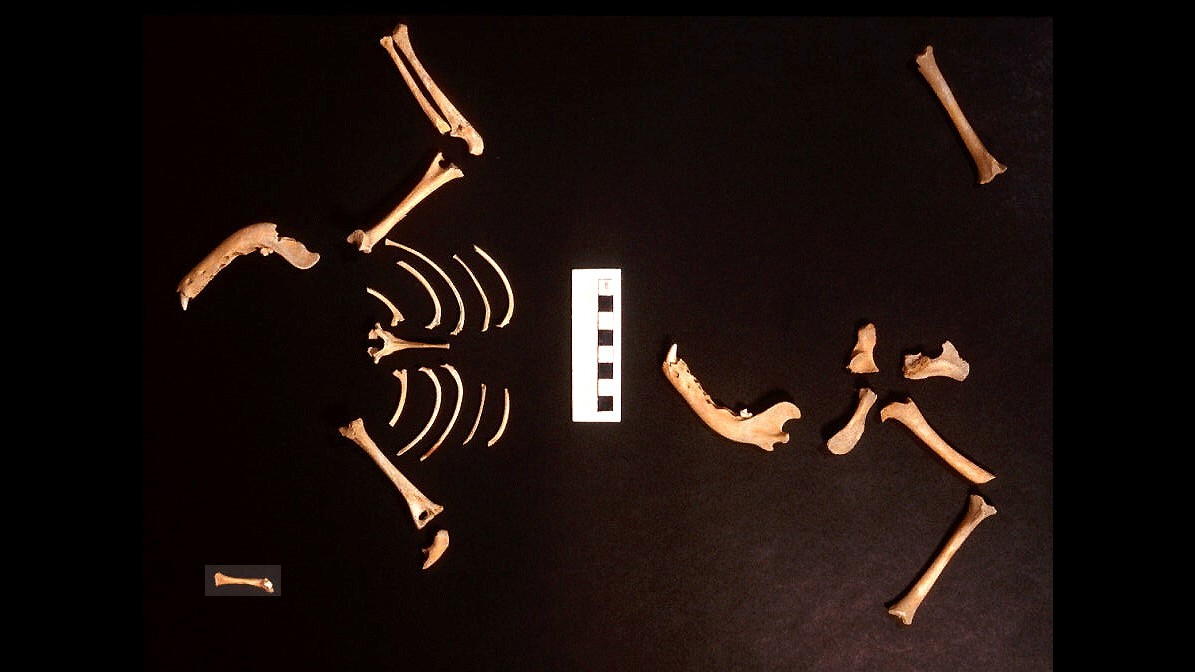Fear of reanimated corpses may explain mysterious burials at 1,600-year-old cemetery
A cemetery in central Italy has the remains of children whose bodies were pinned down with rocks, likely to prevent "revenants" rising from the dead.

Archaeologists in Italy are uncovering a 1,600-year-old burial ground containing the remains of infants, children and sacrificed puppies.
Some of the burials have unusual features — such as a child buried with a block in their mouth, which suggests that people were afraid that they could become "revenants" — corpses revived after death, archaeologists said. Analysis of the burials indicates that many of the dead suffered from malaria.
In 2018, it was suggested by local individuals that this child may have been viewed as a vampire, but new research suggests that this is inaccurate. The idea of the child being a vampire started among locals who called it the "Vampire of Lugnano" and this idea was spread by the media. Since then, archaeologists have had more time to better understand what exactly the child may have been seen as: a possible revenant.
The cemetery is located in the ruins of a Roman villa at the archaeological site of Poggio Gramignano, in central Italy, that dates to the fifth century A.D., a time when the Western Roman Empire was collapsing. By this time, many people in the Roman Empire had converted to Christianity.

Excavations at the site started in the 1980s and continue today. Since then, archaeologists have unearthed a large number of dog remains, many of them from puppies. Dog burials from this period "are often associated with children as tomb protectors and puppies would have been an especially lively and fresh sacrifice with perhaps more potency for remedy for the community," David Soren, a professor of anthropology at the University of Arizona who is one of the team leaders, told Live Science in an email.
Related: Why an outlaw was stabbed to death and then buried face-down in medieval Sicily
Some of the children were buried in unusual ways. One child, for instance, had a piece of mortar in their mouth, and others seem to have been buried with their limbs weighed down with stones. "There was tremendous fear of revenants and of mysterious forces [such as witches] who might harness the spirits of the dead for their own devices," Soren said. Fear of the undead was common among both Christians and non-Christians from this period.
Sign up for the Live Science daily newsletter now
Get the world’s most fascinating discoveries delivered straight to your inbox.

Analysis of the human remains indicate that many of them were suffering from malaria. This outbreak also may have influenced people to bury children in this way. "Stones in the mouth or over the body to weigh it down were seen as apotropaics [having the power to avert evil] to protect the as yet unaffected community," Soren said.
Around this time, there was "a sense of a constant struggle with the supernatural and it is not surprising to see such things in a cemetery where people were facing a severe outbreak of malaria," William Bowden, a professor of classics and archaeology at the University of Nottingham in the U.K. who was not involved in the research, told Live Science in an email.
An important aspect of this site is how carefully it was excavated, John Pearce, a senior lecturer of archaeology at King's College London, told Live Science in an email. This meticulousness allows for a detailed reconstruction of the rituals that were performed on the deceased, Pearce noted.

Owen Jarus is a regular contributor to Live Science who writes about archaeology and humans' past. He has also written for The Independent (UK), The Canadian Press (CP) and The Associated Press (AP), among others. Owen has a bachelor of arts degree from the University of Toronto and a journalism degree from Ryerson University.









